Transplant shock or have I messed up?
carsons_mimi
13 years ago
Featured Answer
Sort by:Oldest
Comments (30)
meyermike_1micha
13 years agolast modified: 9 years agodisplacer
13 years agolast modified: 9 years agoRelated Discussions
I may have really messed up
Comments (12)Christi and Newbienew, First of all I have been remiss in not welcoming both of you to the African violet forum. Your steering towards dangerous waters here. Many a person has started out with one or two violets and gotten sucked into a full blown addiction. Violets are more addictive than crack in my opinion. lol Any way back to the questions. Christi, As to your first question, Newbienew had the correct answer. Yes. I would use just a regular plastic pot. None of that self watering stuff. If your yogurt cup is big enough then poked some holes in the bottom and use that if it is aesthetically pleasing enough for you. I really don't know what size yogurt container were talking about here. As long as the container's the right size you can use anything you want that's plastic or ceramic. I would stay away from Terra Cotta clay pots for now. Yes, you're going to have to mess with the root ball it it's too small for the pot it is intended for. Try to get some of the potting soil out of the root ball and then plant it in moistened potting medium. Then I would put the whole thing, plant, pot and all, in a plastic bank and seal it. Leave it in the plastic bag for about a week and then slowly open the bag over a period of a day. That will acclimate it to the dryer humidity again. Now I'm assuming again that you're going to mix your potting soil with equal parts perlite here. You're already starting out at ground level by having one or two violets. It doesn't get much simpler than that. What Newbienew is doing is a little more complicated. Just keep asking questions if you don't understand what you're doing. That's what we're here for. My third grade teacher once told us. The only stupid question is one that isn't asked. Larry...See MoreHave I messed up?
Comments (6)Plants don't really need soil, they just need the nutrients that are usually found in soil. If you provide water, sun, and nutrients for your plants via fertilizer your plants should grow fine (hence why hydroponic growing works). Also, if you have never had your plants outside then you won't want to just take them out and transplant them all of a sudden. I would try fertilizer first and if that doesn't help you can always transplant. If you intend to transplant right off the bat do a search on "hardening" your plants before putting them outside full time....See MoreSoaking tub - have I already messed up before we've really begun?
Comments (31)No, you were right first time on the Mariposa with 66". We were talking about changing the walls by flipping the relevant studs so give a little more room, or moving the whole wall out a couple of inches which we could do.... for a price. I think the problem is we are doing too much at once - kitchen, bathroom, a ton of painting and stuff in other rooms, painting the whole outside of the house, about to have a baby, deal with a pool for the first time and just moved in. I am probably not on top of the details in the way I should be. There are just 10 million decisions that have to be made all at once. Really struggling with tile decisions too. I am trying to stay as on top of it as I can but it's hard to catch all these details. Do you have any comments on the size of the vanity? We need to decide between a 60" or 72" vanity. For reference this is a big house - the master bath is surprisingly small for the sie of the home. The other two bathrooms both have double sinks.... and both will be bigger than the master bath sinks, no matter what we do. The guest bathroom has a 92" vanity (which is a bit big TBH, we need 2 of everything we share because we can't reach the other side), and the small bathroom has a 77" vanity. We've been looking at these 3 mainly: These are 72": and this one is 60":...See MoreI have majorly messed up!
Comments (4)Mike and Raven, Thanks for the suggestions. I tried everything and just got more frustrated. I was about to call a traveling guru to come to my house and pick up the PC, but I decided to wait because today my DSL provider was sending a tech to update my modem so I can try faster DSL for 3 months, and then decide if I want to do the upgrade and pay for it. Well, the very nice young man who brought the new modem fiddled with my PC for 5 minutes and got the keyboard working again. I don't really understand what he did, but I am certain he is a genius. As for my laptop, it often goes for 6 months without being turned on and then, when I do turn it on it needs hours to update everything available. It doesn't imediately recognize my home network, but if I wait for the prompts it makes me choose which network I want. So, I am choosing my network each time I boot up, but at least it works. My sweet little laptop is AOK and my Kindle works fine so I am quite satisfied. Nancy...See Morecarsons_mimi
13 years agolast modified: 9 years agodisplacer
13 years agolast modified: 9 years agotapla (mid-Michigan, USDA z5b-6a)
13 years agolast modified: 9 years agoashleysf
13 years agolast modified: 9 years agodisplacer
13 years agolast modified: 9 years agomksmth zone 7a Tulsa Oklahoma
13 years agolast modified: 9 years agomeyermike_1micha
13 years agolast modified: 9 years agotapla (mid-Michigan, USDA z5b-6a)
13 years agolast modified: 9 years agoseamommy
13 years agolast modified: 9 years agophebe_greenhouse
13 years agolast modified: 9 years agogreenman28 NorCal 7b/8a
13 years agolast modified: 9 years agomeyermike_1micha
13 years agolast modified: 9 years agocarsons_mimi
13 years agolast modified: 9 years agodisplacer
13 years agolast modified: 9 years agotapla (mid-Michigan, USDA z5b-6a)
13 years agolast modified: 9 years agotapla (mid-Michigan, USDA z5b-6a)
13 years agolast modified: 9 years agogreenman28 NorCal 7b/8a
13 years agolast modified: 9 years agotapla (mid-Michigan, USDA z5b-6a)
13 years agolast modified: 9 years agophebe_greenhouse
13 years agolast modified: 9 years agopuglvr1
13 years agolast modified: 9 years agotapla (mid-Michigan, USDA z5b-6a)
13 years agolast modified: 9 years agocath41
13 years agolast modified: 9 years agopuglvr1
13 years agolast modified: 9 years agomeyermike_1micha
13 years agolast modified: 9 years agopuglvr1
13 years agolast modified: 9 years agophebe_greenhouse
13 years agolast modified: 9 years agopuglvr1
13 years agolast modified: 9 years ago
Related Stories

PETSDealing With Pet Messes: An Animal Lover's Story
Cat and dog hair, tracked-in mud, scratched floors ... see how one pet guardian learned to cope and to focus on the love
Full Story
MOST POPULARHow to Finally Tackle Your Closet's Critical Mess
It can be tough to part with reminders of your past, but your closet needs space for who you are today
Full Story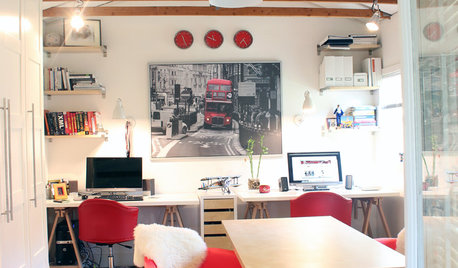
GARAGES6 Great Garage Conversions Dreamed Up by Houzzers
Pull inspiration from these creative garage makeovers, whether you've got work or happy hour in mind
Full Story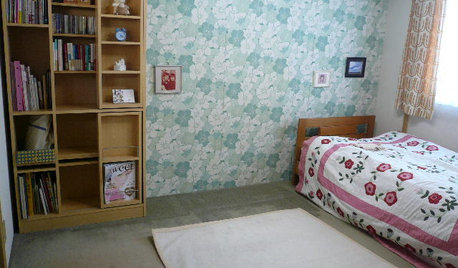
BOOKSCan Tidying Up Result in Life-Changing Magic?
Organizing phenom Marie Kondo promises big results — if you embrace enormous changes and tough choices
Full Story
LIFELate Again? Eliminate the Things Holding You Up in the Morning
If you find yourself constantly running late for appointments, work and get-togethers, these tips could help
Full Story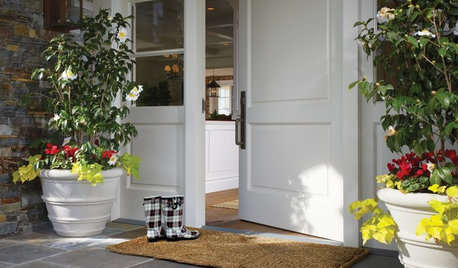
MOST POPULARThe Polite House: On ‘No Shoes’ Rules and Breaking Up With Contractors
Emily Post’s great-great-granddaughter gives us advice on no-shoes policies and how to graciously decline a contractor’s bid
Full Story
MOST POPULARHeads-Up Hues: 10 Bold Ceiling Colors
Visually raise or lower a ceiling, or just add an eyeful of interest, with paint from splashy to soothing
Full Story
COLORWake Up Your Woodwork With Black
Strike a dramatic note with black window frames, shelves, stairs and more, making features stand out or blend in
Full Story
KITCHEN DESIGNKitchen of the Week: A Dark Kitchen Brightens Up
A cooking space honors the past while embracing the present
Full Story
KITCHEN DESIGNLightened-Up Midcentury Kitchen Goes With the Flow
A ranch’s kitchen, dining area and living room are combined in one beautifully unified space, while a mudroom solves a clutter problem
Full Story


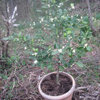
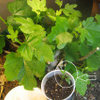
tapla (mid-Michigan, USDA z5b-6a)